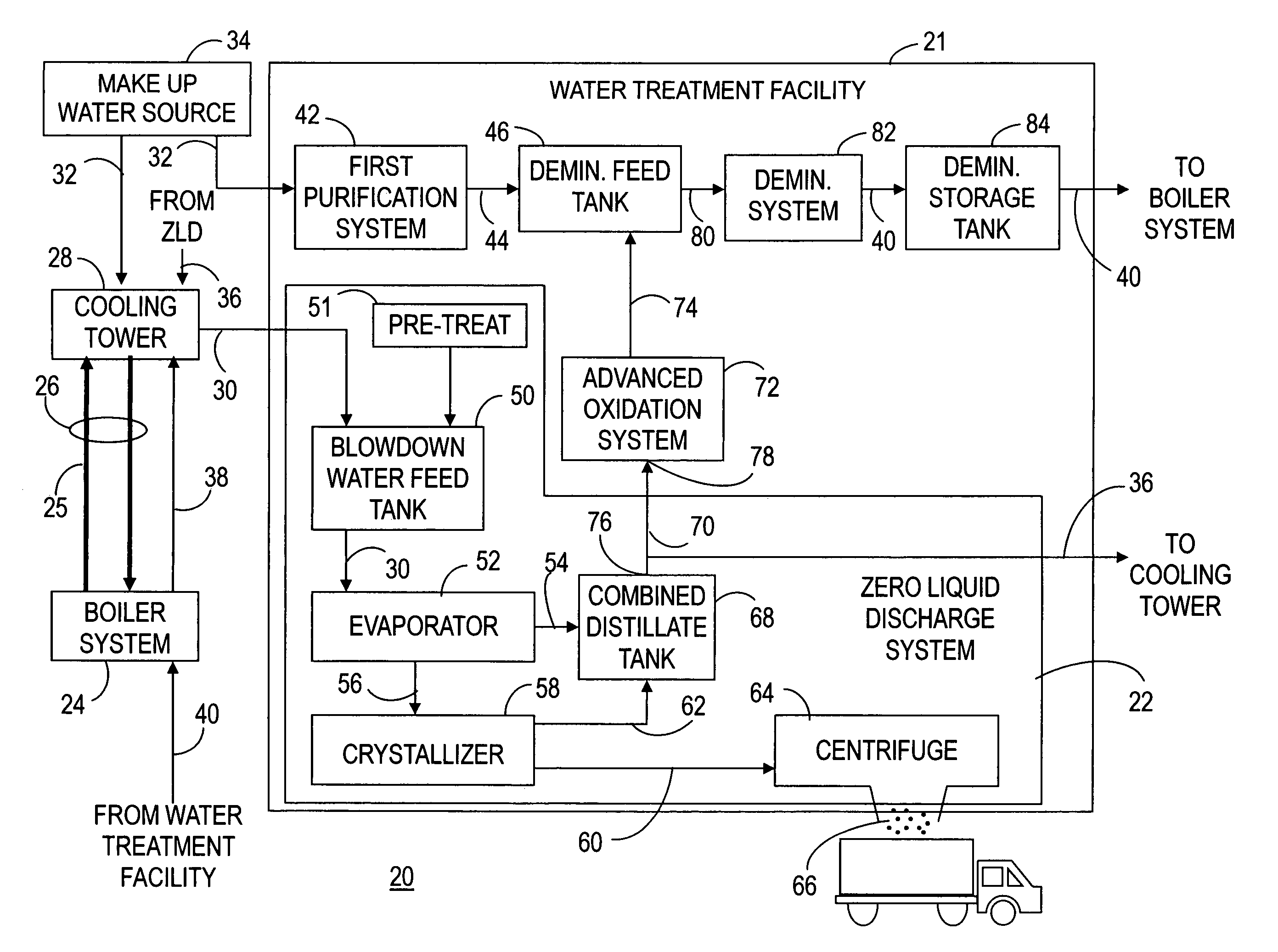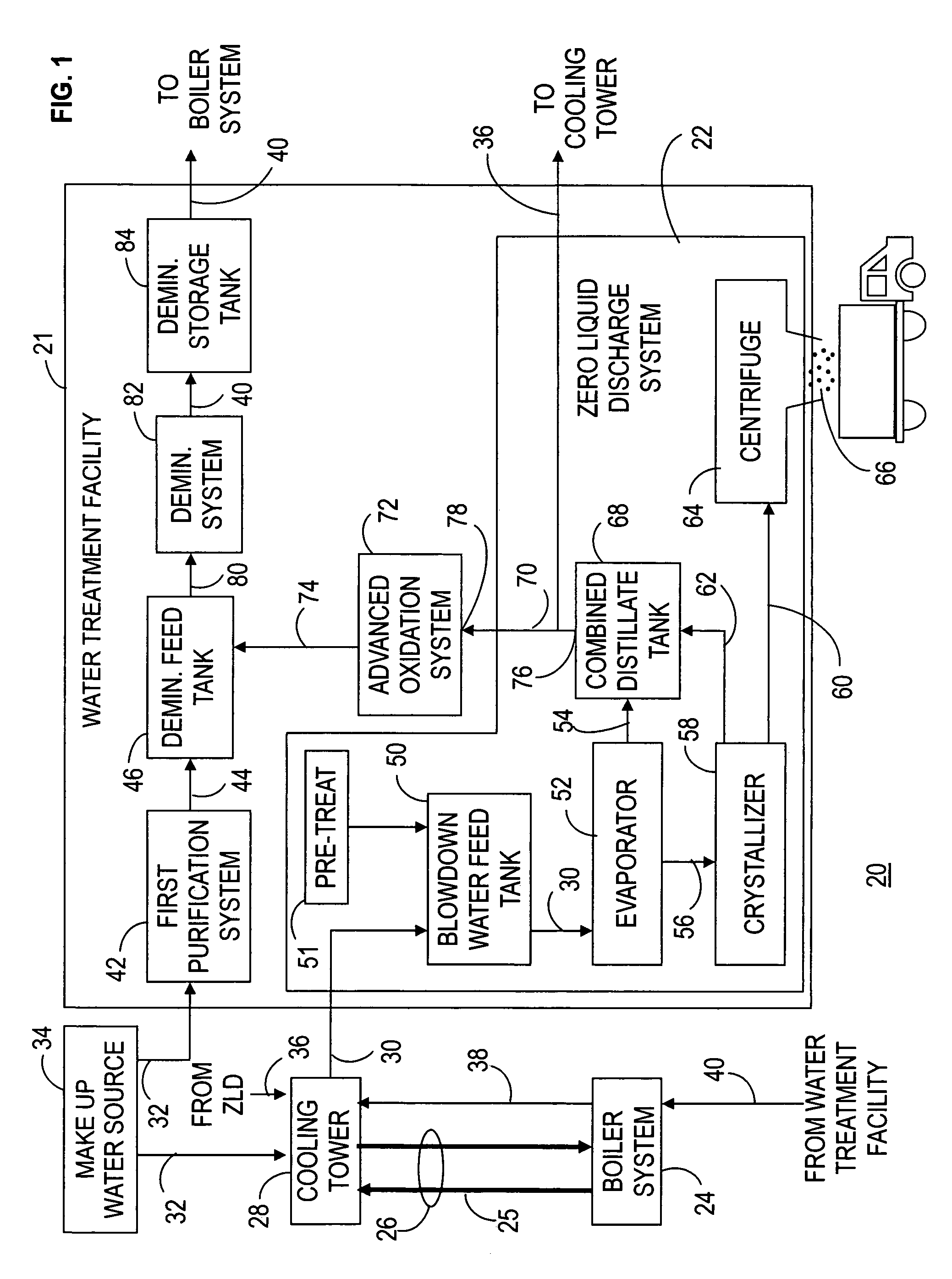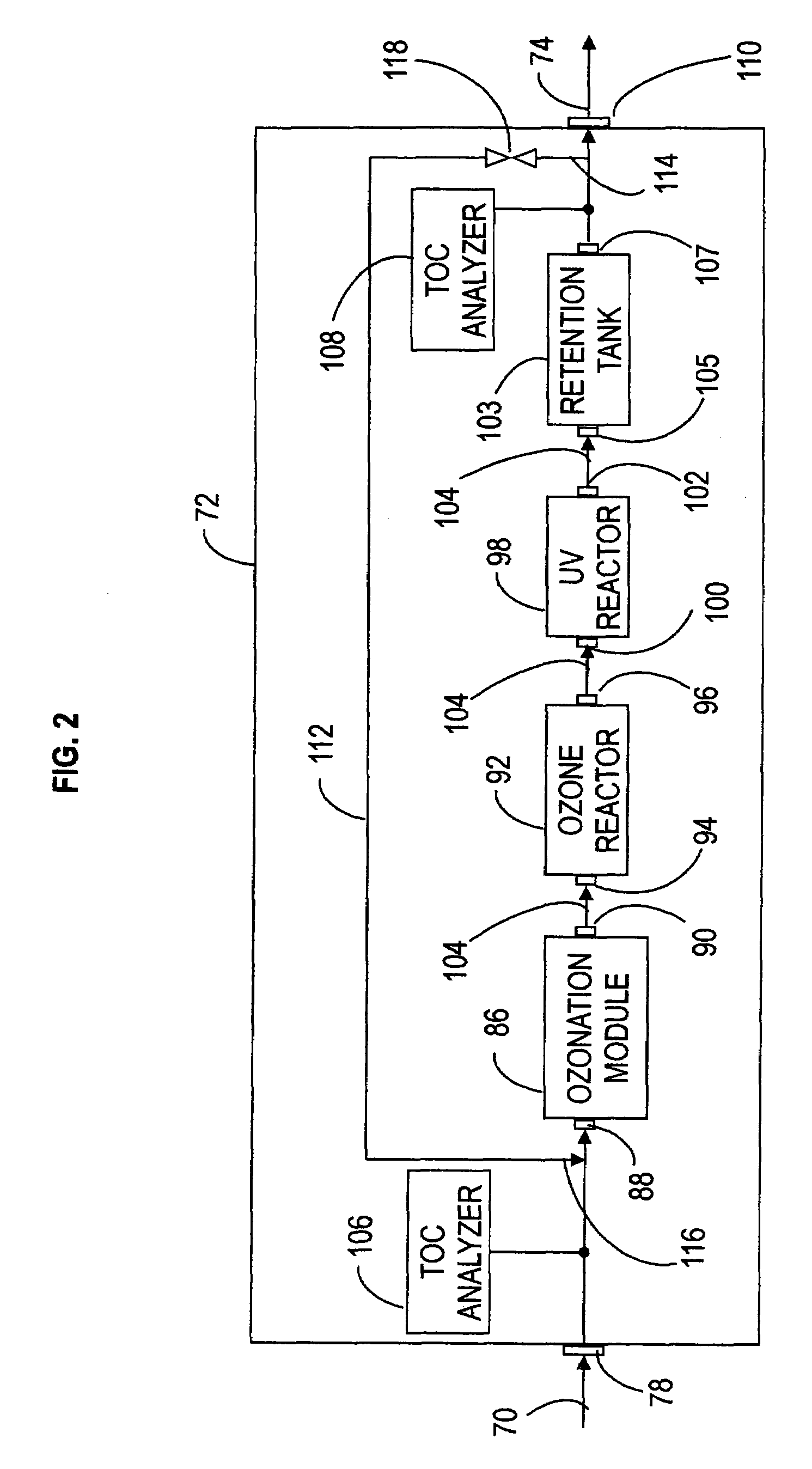System and method of reducing organic contaminants in feed water
a technology of organic contaminants and feed water, applied in the nature of treatment water, multi-stage water/sewage treatment, lighting and heating apparatus, etc., can solve the problems of threatening the integrity of plant equipment, limited degree of water reuse in the cooling tower, and water intensive power generation process, so as to reduce organic contaminants, reduce organic contaminants, and effectively implement and economically viable
- Summary
- Abstract
- Description
- Claims
- Application Information
AI Technical Summary
Benefits of technology
Problems solved by technology
Method used
Image
Examples
Embodiment Construction
[0019]The present invention includes a system and methodology for reducing organic contaminants to form feed water for a facility that incorporates zero liquid discharge (ZLD) techniques to reduce or eliminate waste water discharge into the environment. In particular, the present invention reduces organic contaminants in water output from a ZLD water treatment system implemented in a ZLD power plant. Total organic carbon (TOC) levels provide a measure of the amount of organic contaminants suspended or dissolved in water. Consequently, the present invention reduces organic contaminants in water, and verifies that reduction through the measurement of a TOC level in the product water.
[0020]A high TOC level found in evaporator distillate produced by a brine concentrator of a ZLD treatment system is of particular concern to the present invention. This evaporator distillate having a high TOC level, in excess of 300 ppb (parts per billion), is unsuitable for boiler feed water of a ZLD powe...
PUM
| Property | Measurement | Unit |
|---|---|---|
| pressure | aaaaa | aaaaa |
| pressure | aaaaa | aaaaa |
| temperature | aaaaa | aaaaa |
Abstract
Description
Claims
Application Information
 Login to View More
Login to View More - R&D
- Intellectual Property
- Life Sciences
- Materials
- Tech Scout
- Unparalleled Data Quality
- Higher Quality Content
- 60% Fewer Hallucinations
Browse by: Latest US Patents, China's latest patents, Technical Efficacy Thesaurus, Application Domain, Technology Topic, Popular Technical Reports.
© 2025 PatSnap. All rights reserved.Legal|Privacy policy|Modern Slavery Act Transparency Statement|Sitemap|About US| Contact US: help@patsnap.com



